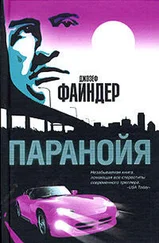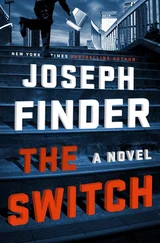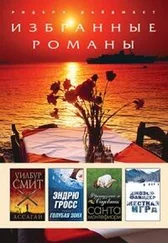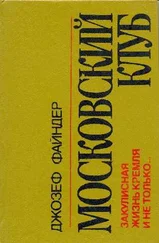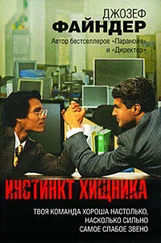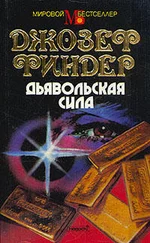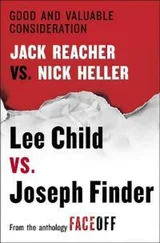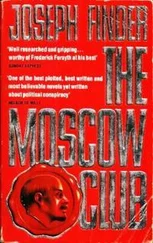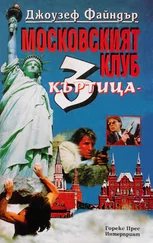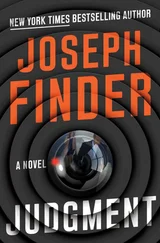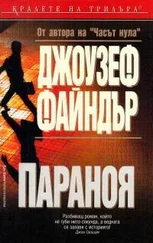“What company was it?”
Now she was quiet for even longer. “That I can’t say.”
“It’s extremely important,” I said.
“I understand. But some of the acquisitions we make I’m just not allowed to talk about.”
“So it was a company that Gifford Industries acquired recently.”
“I can’t say.”
“That doesn’t really help us.”
“I know. I’m sorry. But I have to follow rules around here.”
Sometimes silence is the most powerful weapon in an investigator’s arsenal, so I looked at her for a long time without saying anything.
But the weapon doesn’t always hit its target. She looked back, then looked down, then back up. Then she said softly, “All I can tell you is, Roger was terrified.”
“I see.”
“You know,” she said, “you really do look familiar.”
By the time I reached Georgetown, it was already mid afternoon. I backed into a space on Water Street, along a chain-link fence. A few blocks farther down, Water Street turned into K Street. The banks of the Potomac at that point were not exactly the stuff of postcards. No cherry blossoms here; no gleaming Jefferson Memorial. Instead, there were great mounds of dirt and construction trailers and Porta Potties. The city had been working for years to build a waterfront park in place of the industrial blight, the abandoned factories and the rail yards. They’d turned the old incinerator into a Ritz-Carlton. Maybe someday there’d be a park here. But it was a scraggly, weed-choked, trash-littered mess, in the shadows of the Whitehurst Freeway. Truly an urban failure story.
My cell phone emitted four high beeps, alerting me to a text message.
It was a location report from the GPS tracker that Merlin had sent via FedEx to EasyOffice, Traverse Development’s mail drop in Arlington, Virginia. The GPS device had just been delivered to the mail drop. The text message linked me to a Google Earth map, where I could see a flashing red dot indicating where the tracker was.
That told me nothing. I already had that address.
I walked up the footbridge to Cady’s Alley, crossed over to the restaurant where Lauren and Roger had had their last dinner. A Japanese restaurant on Thirty-third Street called Oji-San.
Then I retraced their route from the restaurant, down Cady’s Alley. Back down the footbridge. Across Water Street to their car.
There I stood for a few minutes, thinking. A black Humvee drove by. We’d used up-armored M1114 Humvees in Iraq as our tactical vehicles, equipped with fire-suppression systems and frag protection and mounts on the roof hatch for machine guns and grenade launchers. The air-conditioning wasn’t bad either. But I never understood the point of driving one of them around the city, even a civilian model. What did they expect, rocket-propelled grenades in Georgetown?
Lauren had said it was raining the night of the attack. Parking was probably in short supply. The restaurant didn’t offer valet parking, but there was a garage nearby. So why did Roger park all the way down the hill on Water Street?
He wasn’t a tightwad. You couldn’t grow up in our house in Bedford and learn to be a coupon-clipper. At the most, you could grow up to be someone who doesn’t much care about money – having seen what it can and can’t do. But my brother, unlike me, shared Victor Heller’s unhealthy fixation on wealth. He liked to show off. He had to have the fanciest car, the most opulent kitchen. This was not a guy who’d happily park his S-Class Mercedes in the squalor of Water Street, in the underbelly of the freeway, amid the vagrants and broken bottles, a long walk away on a rainy night.
I didn’t get it.
And I thought about what Lauren remembered Roger saying the night of the attack: “Why her?”
Not, Why? Not, Leave her alone .
But, Why her?
As in, “Why are you coming after her, when it’s me you want.”
Or something like that.
I checked my watch, and while I continued to puzzle over my brother’s last remarks, I walked along Water Street in the direction of the Key Bridge. I liked that bridge. I liked the rhythm of its five high concrete arches, the open spandrel design. I even liked the irony that, in order to build the bridge named after Francis Scott Key, the guy who wrote the “Star Spangled Banner,” they had to tear down Francis Scott Key’s house. Or maybe it was to build that eyesore, the Whitehurst Freeway.
It took me six minutes to walk to the ATM where Roger had made his withdrawal. It was one of those twenty-four-hour walk-up cash machines, built into a brick wall next to a gas station. Outdoors and exposed. A young woman was using it, a large woman dressed entirely in black with platinum hair sticking up in the front like a rooster’s comb. Tufts of her hair were dyed orange and blue. Either she was doing that whole punk thing, or she was on her way to a costume party. She turned around and glared at me. I was too close. I was making her nervous.
So I backed off a few feet and surveyed the area while I waited. This was a no-name gas station that was open twenty-four hours and advertised fresh pastries and the coldest drinks in town. It sold cigarettes and rolling papers and lottery tickets. The pumps were self-serve.
A black Humvee passed by. The same one that had driven by on Water Street? I wondered whether I was being watched. I noted the license plate.
I assumed that Roger had been trundled into a vehicle at the scene of the attack, then driven over to the ATM. Why, I had no idea. But from here I could see the entrance to the Key Bridge, which took you across the Potomac to Virginia and the Parkway, the Beltway, any number of highways. Not a bad place to stop on your way out of town.
The large woman was taking her damned time at the cash machine. I approached, my shoes scraping against a scree pile of that white granular stuff used to absorb gasoline spills. She turned, glared at me, extracted her card and her cash, and hurried away.
The brick wall was covered in graffiti. I was pretty sure this was one side of the old Georgetown Car Barn, a nineteenth-century building where they used to store the trolley cars. Probably it was now offices or condos.
At the top of the ATM console was the lens of a CCTV camera – the one that had recorded Roger approaching, some guy with a gun at his side. Moving right up to the ATM, I turned around and watched an old Honda drive into the lot and pull up next to a pump. Assuming that Roger and his captor or captors had driven here from Water Street, I figured they must have come up M Street. Water Street was a dead end.
From here, they could have driven right onto the Key Bridge. But they could have also taken the Whitehurst Freeway. As I turned my head, I noticed something on top of the convenience store: another security camera.
A weatherproof bullet camera, as it’s called, attached to the steel arm of a mounting bracket. It was aimed at the cash machine.
The gas-station attendant stood at a cash register in a booth behind thick bulletproof Plexiglas. He was changing the paper tape in the cash register. He was a small, squat, dark-skinned man in his fifties. Indian or Pakistani, maybe, with jet-black hair and steel-framed aviator glasses and a serious scowl. He wore a tie. I concluded he wasn’t merely the attendant but probably the owner. A black name badge pinned to his white shirt said MR. YOUNIS.
Mr. Younis. This was a man who demanded respect.
“Excuse me, Mr. Younis,” I said.
He glared at me, suspicious. “Yes?”
“I wonder if you could help me.” I kept my tone matter-of-fact. “A couple of days ago I was mugged over there by the ATM. Couple of thugs took my cash, my wallet, everything.”
Читать дальше

